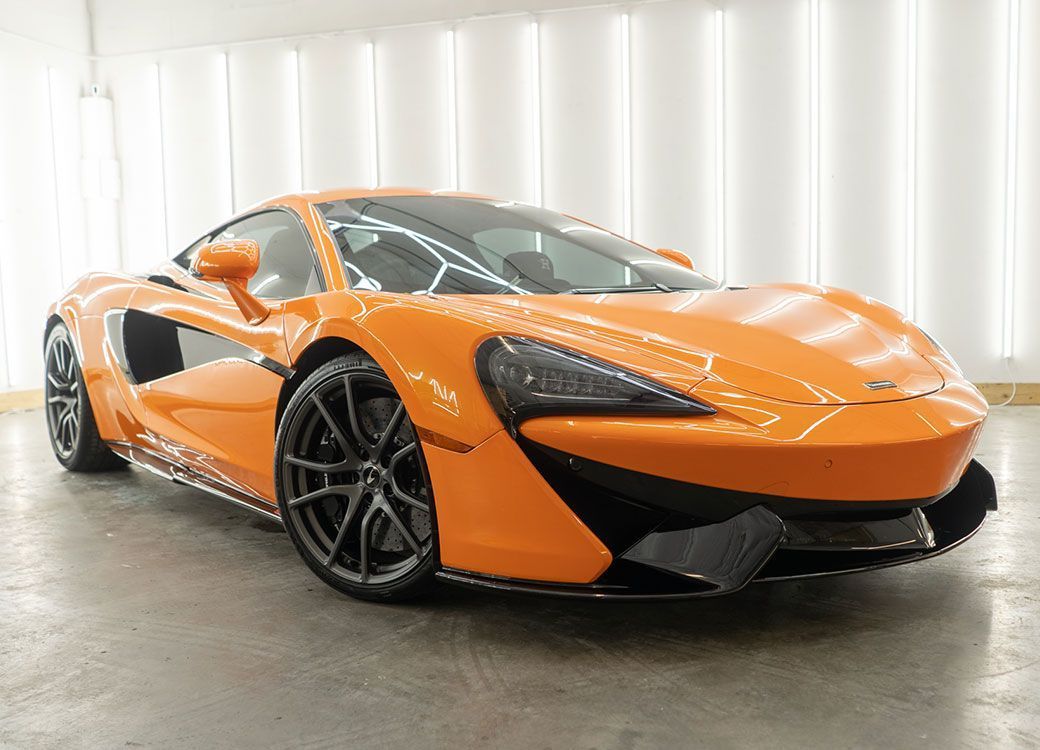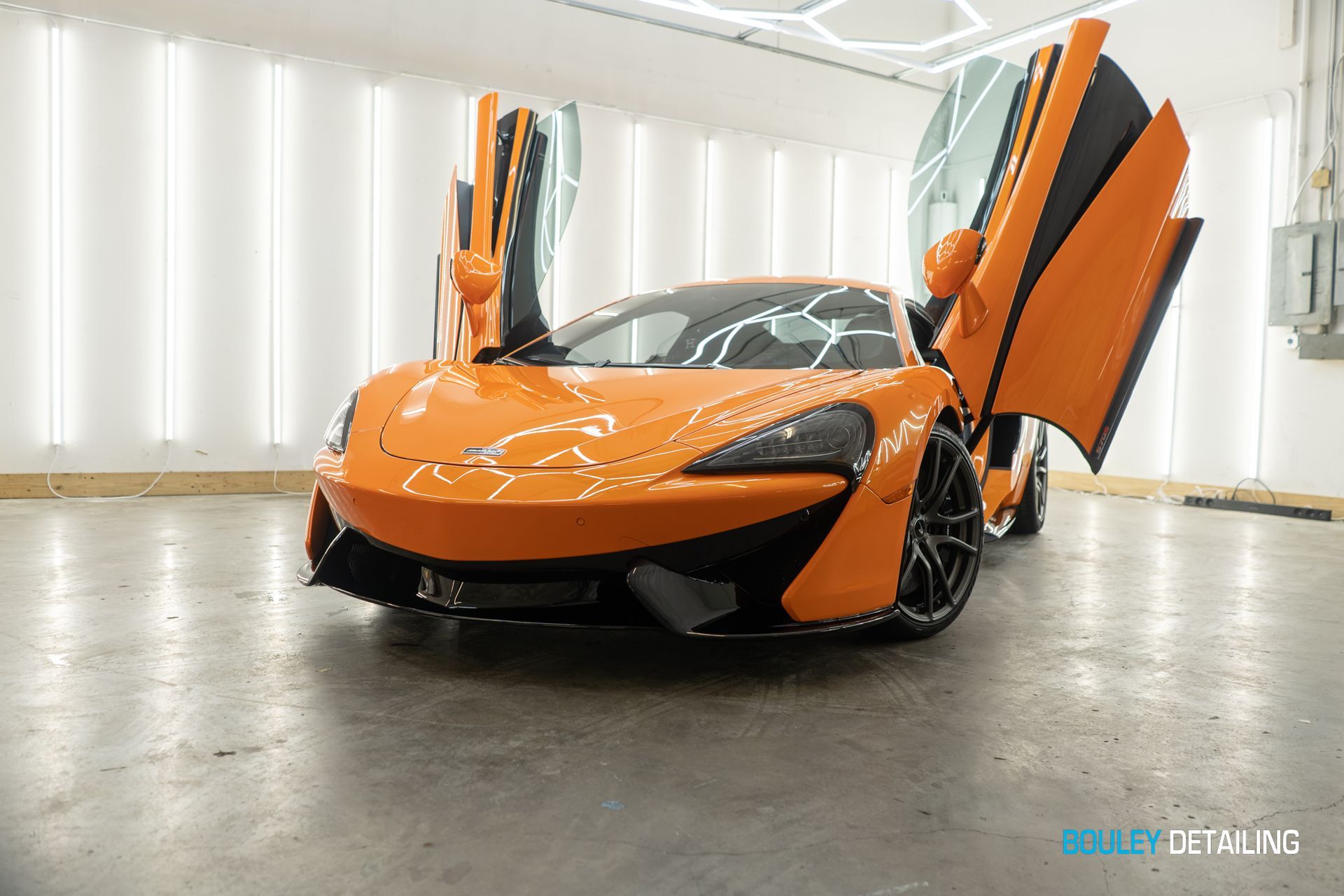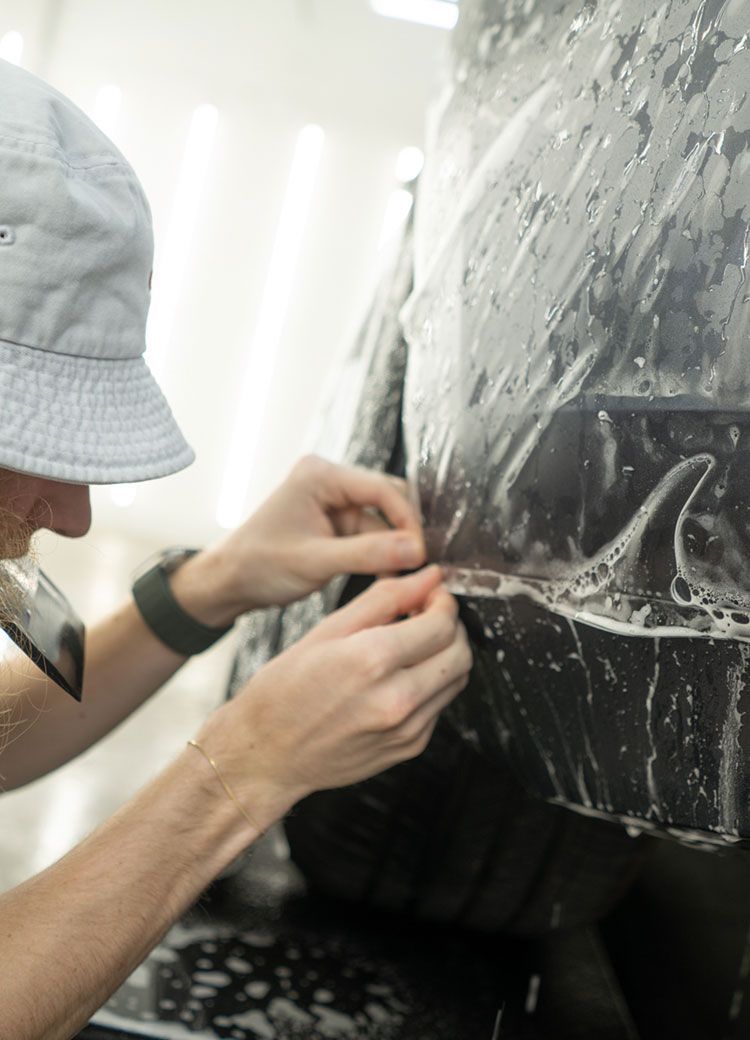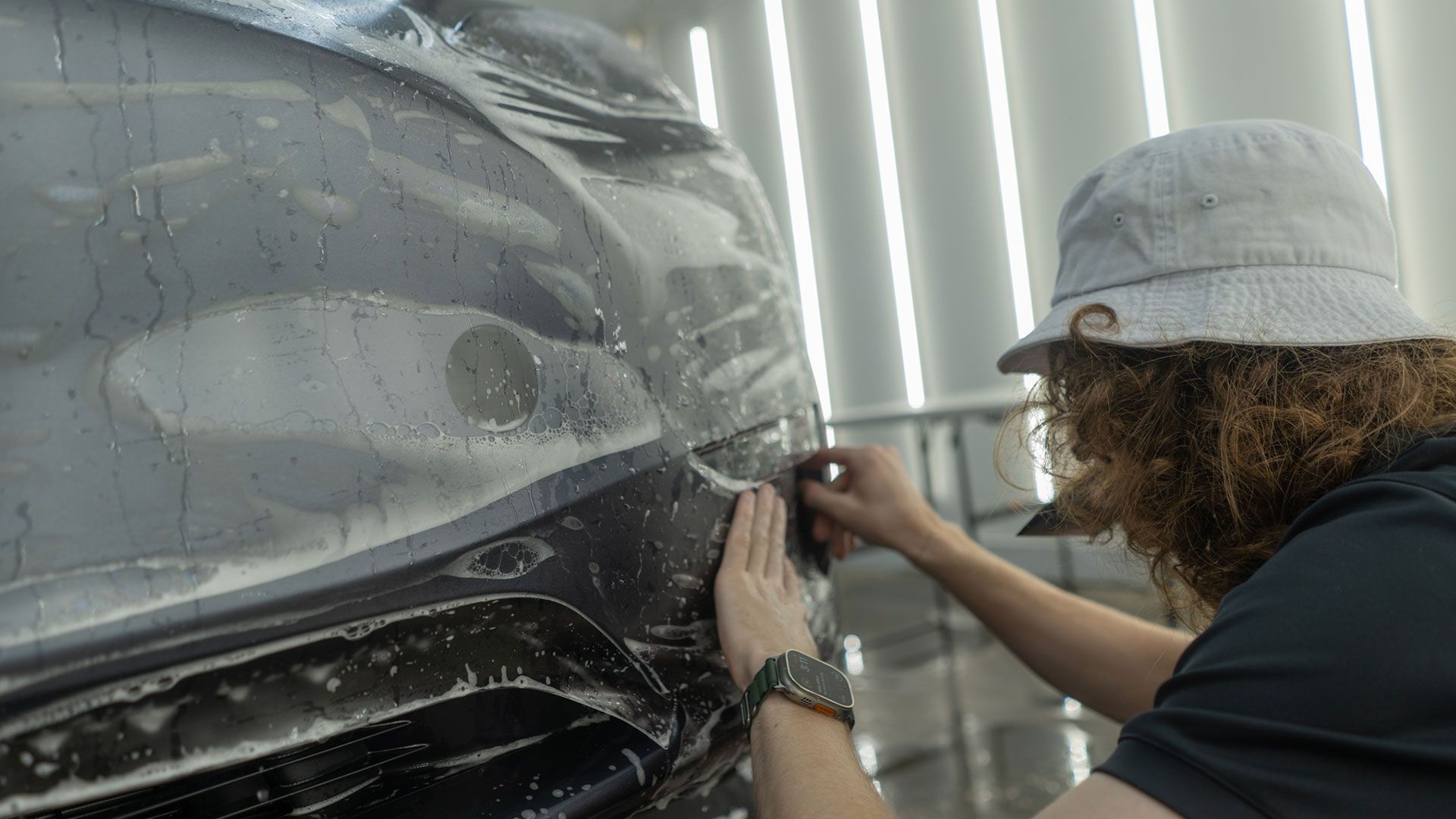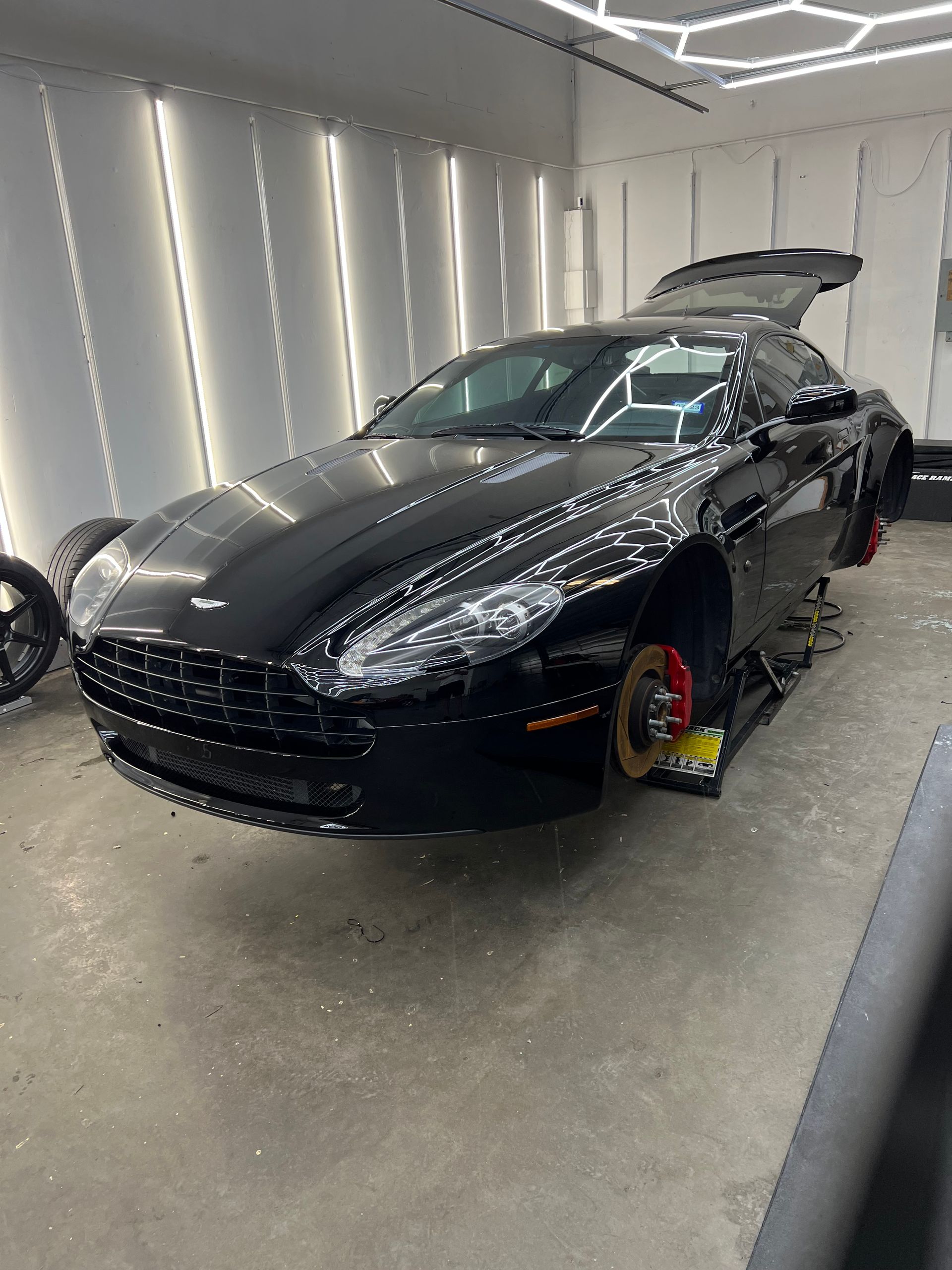Why Paint Protection Film is a Must-Have Investment for Your Vehicle
CALL (979) 264-9793
GET A FREE ESTIMATEIf you’ve ever found yourself worrying about a brand-new car getting scratched or chipped, you’re not alone. The constant dread of seeing your investment deteriorate under daily wear and tear can be mentally taxing. After extensively searching for ways to preserve that showroom shine, it's clear that paint protection film stands out as a top solution.
Paint protection film is considered a must-have for your car because it effectively shields the paint from chips, scratches, and environmental elements, preserving your vehicle's aesthetic appeal and resale value. Additionally, modern paint protection film offers self-healing properties that can repair minor scratches over time, making it a cost-effective investment for maintaining your car's appearance long-term.
What is Paint Protection Film (PPF)?
Paint protection film, often referred to as PPF, is more than just a layer of plastic; it's your vehicle's first line of defense against the hazards of the road. This transparent, durable film clings tightly to the paint surface of your car, providing an effective barrier against scratches, chips, and environmental damage. Made primarily from polyurethane or similar materials, a paint protection film is engineered to withstand the elements while maintaining the pristine appearance of your vehicle’s exterior.
Originally developed for military applications during the Vietnam War, its primary purpose was to protect helicopter blades from wear and tear caused by flying sand and debris. Fast forward to today, and this same technology has been adapted for commercial use in the automotive industry. It's impressive to think how something built for military resilience now protects our cars on daily drives. The way a paint protection film works is quite fascinating. When applied correctly, it forms an invisible shield over the paint surface that absorbs impacts from road debris without damaging the underlying paint. This feature not only preserves your car's aesthetic but also helps maintain its value over time. Considering the investment you've made in your vehicle, preserving it with a paint protection film becomes a preemptive measure worth taking.
Different brands have different attributes, such as UV resistance, thickness variations, and self-healing properties, which cater to different drivers' needs. For instance, with a typical high-quality paint protection film measuring around 8 mils thick (about 0.008 inches), you can trust it to handle everyday wear—from minor rock hits to pesky tree sap—all while keeping your vehicle looking new. With advancements in technology, modern PPF has come a long way from its initial purposes. Today’s versions resist yellowing and cracking over time and are easier to install and remove without causing damage to your vehicle's original paint job. You can enjoy the benefits of paint protection film knowing that you have a reversible safeguard against potential future damages.
Key Benefits of PPF for Vehicles
The first and foremost benefit of paint protection film is its enhanced protection. PPF can guard your vehicle against common road hazards, including rock chips, bird droppings, and bug splatters. These seemingly minor threats can do significant damage over time, leading to costly repairs. Imagine driving down a gravel road only to hear those pesky stones pinging off your car—without a paint protection film, each hit could be a ding that threatens your paint job. With the film in place, it acts like a shield, absorbing impacts and preventing unsightly wear and tear on your car’s exterior.
But what about the financial aspect? That's where the cost-effectiveness of paint protection film really shines. Consider this scenario: if you were to neglect the need for protection and end up facing a minor paint repair, it could easily cost anywhere from $300 to $500. Over the lifetime of your vehicle, these repair costs can accumulate alarmingly. On average, drivers repaint their vehicles every few years due to such damages because they want to keep their cars looking fresh. In stark contrast, applying a paint protection film could mitigate numerous such expenses by preserving the original paintwork, ultimately resulting in savings that can exceed the initial investment on the film itself.
It's critical to realize that maintaining your vehicle's appearance isn’t just a matter of aesthetics; it also plays a pivotal role in the resale value of your car. Future buyers naturally gravitate toward cars that look well protected and maintained. When potential buyers see that a vehicle has a paint protection film installed, they recognize it as a sign of good care, signaling that the owner is proactive about its maintenance. This added assurance can significantly increase resale value. With buyers willing to pay a premium for cars that have been protected from environmental hazards and physical damage, PPF becomes more than just an initial expense; it transforms into a strategic decision to maximize your investment.
How PPF Protects Against Damage
The magic of paint protection film lies in its ability to absorb and deflect impacts, making it a formidable line of defense against the wear and tear your vehicle may encounter. Think of paint protection film as a shield—a thin, transparent layer expertly designed to maintain the integrity of your car’s original paint. Every scratch, chip, or scrape will tell a story, but with a paint protection film, those stories can be far less costly to fix.
- Impact Absorption: Consider this: when a rock or a piece of debris hits your car at high speed, the potential for damage is significant. However, with a paint protection film applied, that same impact becomes much less harmful. The film absorbs the energy from the collision; rather than concentrating the force on the paint below, it distributes it across a broader area. This dispersion reduces the likelihood of chipping and keeps your paint looking flawless.
- Self-Healing Properties: Adding to the allure of modern paint protection films, like those produced by leading manufacturers, they feature innovative self-healing properties. When minor scratches occur—perhaps from branches brushing against your car or even small accidents—exposing the film to warmth from sunlight or warm water can cause these imperfections to disappear. It's fascinating to watch this process unfold as your vehicle rejuvenates before your eyes.
- UV Protection: High-quality paint protection film provides essential protection against harmful UV rays. This protective barrier prevents oxidation and fading over time, preserving not only your car's appearance but also ultimately contributing to its resale value. Just imagine seeing vibrant colors years down the line instead of a washed-out exterior.
Recognizing how these protective features work lays the groundwork for understanding why investing in a paint protection film goes beyond aesthetics—it plays a crucial role in maintaining both your vehicle's condition and its future value.
Evaluating Cost and Long-Term Value
One of the most common concerns potential buyers voice when considering paint protection film is the upfront investment. While it can seem daunting, especially with figures like $2,000 to $7,000 for a full-body application, this cost must be contextualized within the broader picture of vehicle maintenance and resale value.
Cost Breakdown
The price range for paint protection film largely depends on the size and type of vehicle, as well as whether you opt for full-body coverage or only certain high-impact areas like the hood, bumper, and side mirrors. For instance, a full-body application might set you back between $2,000 and $7,000. Alternatively, partial applications can be more budget-friendly, typically costing between $800 and $1,500. Despite these figures appearing steep at first glance, it's crucial to look beyond immediate costs to understand how these expenses translate into long-term savings.
Long-Term Savings
When you factor in the costs associated with multiple paint repairs throughout the lifespan of your car, the math begins to lean in favor of paint protection film. For example, repairing chips and scratches without a paint protection film could easily add up to $1,000 to $3,000 per incident. If you experience even one paint repair from damage that PPF would have prevented each year, then suddenly the expense of high-quality paint protection film starts to look much more insignificant in comparison. Additionally, vehicles equipped with paint protection film often maintain higher resale values. Cars with paint protection film can sell for about $1,000 to $2,000 more than similar models without it. Given that many drivers keep their vehicles for several years—and considering depreciation—this added resale value becomes a significant advantage.
Investing in a paint protection film means safeguarding both your investment and your car’s aesthetic appeal. You're not just paying for a service; you're purchasing peace of mind for years to come. Examining these factors gives us a deeper understanding of why certain features are critical when protecting your vehicle's finish and how to make informed choices moving forward.
Choosing the Right PPF for Your Car
Selecting the correct paint protection film depends on multiple factors that ensure you’re not only making a sound investment but also providing your car with the best protection possible. Every car owner wants their vehicle to look pristine for years to come, and using a high-quality paint protection film can help achieve that by acting as a shield against scratches, road debris, and environmental wear. Understanding your options is key.
Quality vs. Budget
The landscape of paint protection films encompasses a wide range of products, varying significantly in price and quality. Higher-end films provide top-notch protection with remarkable clarity and durability. However, this superior protection comes at a premium cost. On the other hand, budget-friendly options exist. While they may offer less durability and possibly compromise on aesthetics, they can still provide essential protection for everyday driving scenarios. It boils down to how you use your vehicle; if you’re more of a weekend driver or park it away from heavy traffic, a budget option might serve you well until you determine if further investment is warranted.
Warranty and Service
Equally as important as choosing between quality and budget is ensuring that the product carries a robust warranty—ideally lasting between 5 and 10 years. A solid warranty not only reflects the manufacturer's confidence in their product but also protects your investment in case of any unforeseen issues such as bubbling or peeling. It’s critical to verify whether installation services are certified by the paint protection film manufacturer. This certification is essential because improper installation can void your warranty and lead to premature failure of the film itself. Always check if your installer has undergone specific training related to applying the film brand you choose. Some manufacturers even offer training programs to elevate installer standards; seeking out these professional services can make a significant difference in your overall satisfaction with the product.
Professional Installation Tips
Proper installation is key to ensuring that paint protection film performs effectively and provides the protection your vehicle deserves. The process might seem straightforward, but several essential steps must be followed with precision.
- Surface Preparation: Before any film touches your car, surface preparation is vital. The car’s exterior must be meticulously cleaned to eliminate any dirt or contaminants. This means washing the vehicle with a pH-neutral soap, rinsing thoroughly, and drying it using microfiber cloths. A critical part of this step involves decontaminating the paint using a clay bar or similar product, which helps remove embedded particles that could mar the paint protection film's appearance if trapped underneath. Not only does this cleaning ritual enhance adhesion, but it also ensures that your paint looks flawless once the film is applied.
- Applying the Film: Once the surface is pristine, skilled professionals move on to applying the film itself. They typically use a slip solution—a mixture of water and a small amount of soap—allowing them to maneuver the film easily into place without damaging its adhesive backing. As the film settles, using squeegees becomes essential. These tools help to push out any air bubbles while securing the film tightly against the surface. It’s important to note that working in controlled conditions is paramount for optimal adhesion and reducing any risk of imperfections during application.
- Post-Installation Care: After installation, patience is crucial. Vehicle owners should avoid washing their cars for at least a week to allow the film to adhere completely. This initial period is when the bond forms strongest between the paint and PPF, creating an effective barrier against debris and environmental damage. When eventually cleaning your car again, it's best practice to use products specifically designed for use with paint protection film; they help maintain not just clarity but also longevity of the investment you've made in vehicle protection.
In essence, following these steps diligently ensures that your paint protection film performs at its best, protecting your investment while enhancing your vehicle's aesthetic appeal. Consider these insights not just as tips but as guiding principles when entrusting your vehicle to professionals, ensuring you achieve maximum protection and satisfaction from your paint protection film investment. With attention to detail during installation and proper care afterwards, you can enjoy peace of mind knowing your vehicle's appearance will remain stunning for years to come, reaffirming why paint protection film is a valuable addition for any car owner.
Leading PPF Installers in Houston, TX
Our team at Bouley Detailing in Houston, TX, is recognized for our precision and expertise in paint protection film installation. Whether safeguarding your vehicle from road debris or preserving its factory-fresh finish, our team delivers unmatched results. Using premium materials and advanced techniques, we ensure a seamless, durable application that enhances the longevity of your car’s paint. For reliable paint protection film solutions that protect and maintain your vehicle’s appearance, trust Bouley Detailing for exceptional craftsmanship. Call us at (979) 264-9793 today to get started!
Bouley Detailing Blog
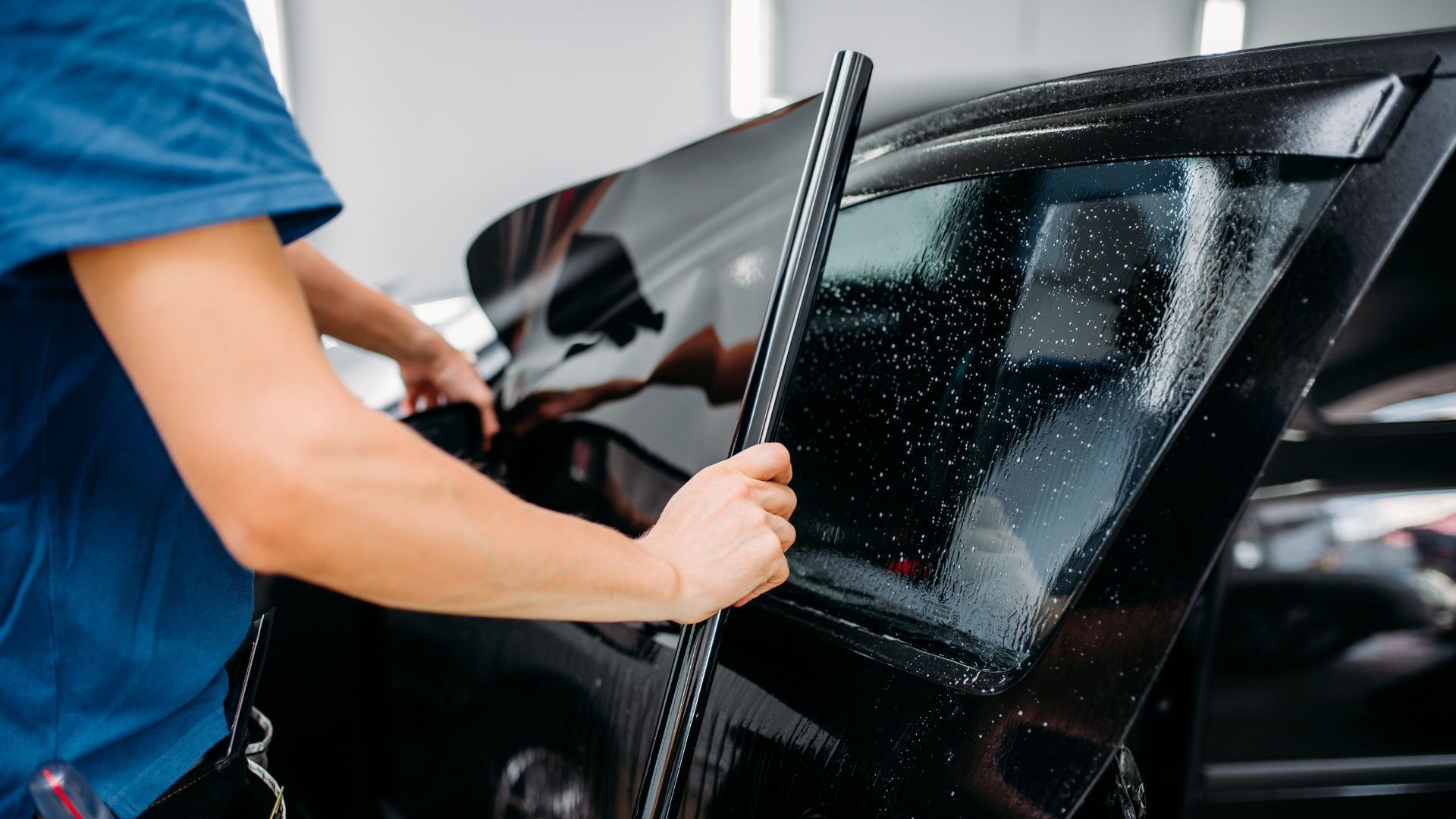
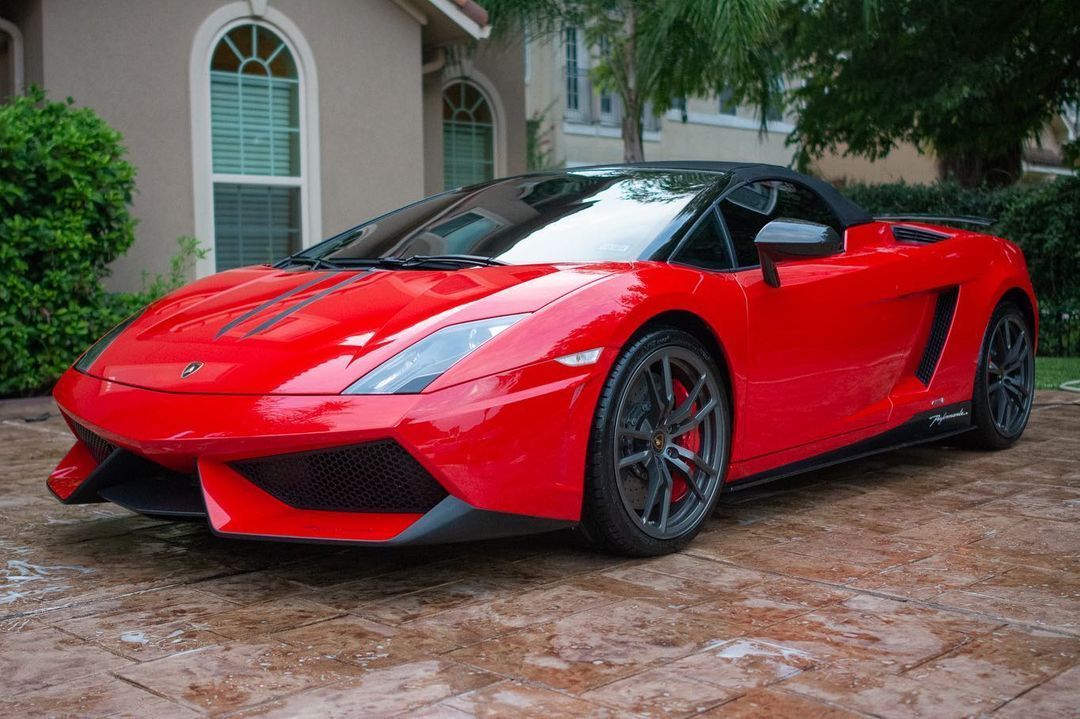
Share with your friends
Protect and Enhance Your Vehicle
Founded in 2018, Bouley Detailing emerged from an individual detailer's desire to enhance and protect all make and model automobiles in the Houston area, helping owners recognize a new value and unshakable pride in what they drive. We are certified installers of the various formulas provided by Gtechniq Ceramic Coatings and have extensive experience and training in installing and maintaining XPEL Paint Protection Film and XPEL Tint Film products as well. An all-around auto detailing experience is what you receive when you book, so get on board with the exceptional car care found here at Bouley Detailing today!
Hours of Operation
Monday - Friday: 9:00 AM - 5:00 PM
Saturday - Sunday: Closed
Designed by the team at Detailers Roadmap, a platform developed for detailing operators across the globe.
All Rights Reserved | 8bitcreative, LLC | Bouley Detailing

